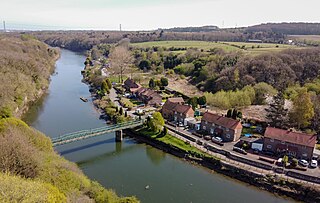In linguistics, a collective noun is a word referring to a collection of things taken as a whole. Most collective nouns in everyday speech are not specific to one kind of thing, such as the word "group", which can be applied to people or dogs or other things. Some collective nouns are specific to one kind of thing, especially terms of venery, which identify groups of specific animals. For example, "pride" as a term of venery always refers to lions, never to dogs or cows. Other examples come from popular culture such as a group of owls, which is called a "parliament".
Rabbinic Judaism considers seven names of God in Judaism so holy that, once written, they should not be erased: YHWH, El ("God"), Eloah ("God"), Elohim ("God"), Shaddai (“Almighty"), Ehyeh, and Tzevaot. Other names are considered mere epithets or titles reflecting different aspects of God, but Khumra sometimes dictates special care such as the writing of "G-d" instead of "God" in English or saying Ṭēt-Vav instead of Yōd-Hē for the number fifteen or Ṭēt-Zayin instead of Yōd-Vav for the number sixteen in Hebrew.
In grammar, the vocative case is a grammatical case which is used for a noun that identifies a person being addressed, or occasionally for the determiners of that noun. A vocative expression is an expression of direct address by which the identity of the party spoken to is set forth expressly within a sentence. For example, in the sentence "I don't know, John," John is a vocative expression that indicates the party being addressed, as opposed to the sentence "I don't know John" in which "John" is the direct object of the verb "know". In simple terms, the first sentence is the speaker telling a person called John that they don't know something, while the second sentence is the speaker saying that they don't know who John is.

Y, or y, is the twenty-fifth and penultimate letter of the ISO basic Latin alphabet and the sixth vowel letter of the modern English alphabet. In the English writing system, it mostly represents a vowel and seldom a consonant, and in other orthographies it may represent a vowel or a consonant. Its name in English is wye, plural wyes.
In linguistics, grammatical number is a grammatical category of nouns, pronouns, adjectives and verb agreement that expresses count distinctions. English and other languages present number categories of singular or plural, both of which are cited by using the hash sign (#) or by the numero signs "No." and "Nos." respectively. Some languages also have a dual, trial and paucal number or other arrangements.
The is a grammatical article in English, denoting persons or things already mentioned, under discussion, implied or otherwise presumed familiar to listeners, readers or speakers. It is the definite article in English. The is the most commonly used word in the English language; studies and analyses of texts have found it to account for seven percent of all printed English-language words. It is derived from gendered articles in Old English which combined in Middle English and now has a single form used with pronouns of any gender. The word can be used with both singular and plural nouns and with a noun that starts with any letter. This is different from many other languages which have different forms of the definite article for different genders or numbers.

English nouns are inflected for grammatical number, meaning that, if they are of the countable type, they generally have different forms for singular and plural. This article discusses the variety of ways in which English plural nouns are formed from the corresponding singular forms, as well as various issues concerning the usage of singulars and plurals in English. For plurals of pronouns, see English personal pronouns.
The apostrophe is a punctuation mark, and sometimes a diacritical mark, in languages that use the Latin alphabet and some other alphabets. In English, it is used for four purposes:
In English, the plural form of words ending in -us, especially those derived from Latin, often replaces -us with -i. There are many exceptions, some because the word does not derive from Latin, and others due to custom. Conversely, some non-Latin words ending in -us and Latin words that did not have their Latin plurals with -i form their English plurals with -i. Some words' plurals end in -i even though they are not Latin, or that is not the Latin plural, e.g., octopi is sometimes used as a plural for octopus. Prescriptivists consider these forms incorrect, but descriptivists may simply describe them as a natural evolution of language.

The Syriac alphabet is a writing system primarily used to write the Syriac language since the 1st century AD. It is one of the Semitic abjads descending from the Aramaic alphabet through the Palmyrene alphabet, and shares similarities with the Phoenician, Hebrew, Arabic and Sogdian, the precursor and a direct ancestor of the traditional Mongolian scripts.

A panini or panino is a sandwich made with Italian bread, usually served warmed by grilling or toasting.

Kalau Lagau Ya, Kalaw Lagaw Ya, Kala Lagaw Ya, or the Western Torres Strait language, is the language indigenous to the central and western Torres Strait Islands, Queensland, Australia. On some islands, it has now largely been replaced by Torres Strait Creole.

Ukrainian Ye is a character of the Cyrillic script. It is a separate letter in the Ukrainian alphabet, the Pannonian Rusyn alphabet, and both the Carpathian Rusyn alphabets; in all of these, it comes directly after Е. In modern Church Slavonic, it is considered a variant form of Ye (Е е). Until the mid-19th century, Є/є was also used in Romanian and Serbian. Other modern Slavonic languages may use Є/є shapes instead of Е/е for decorative purposes. Then, the letter is usually referred to by the older name Yest and the descriptive name Long E.

Central Oregon Community College is a community college in Bend, Oregon. It primarily serves residents of Deschutes, Jefferson, and Crook Counties.
The roots of verbs and most nouns in the Semitic languages are characterized as a sequence of consonants or "radicals". Such abstract consonantal roots are used in the formation of actual words by adding the vowels and non-root consonants which go with a particular morphological category around the root consonants, in an appropriate way, generally following specific patterns. It is a peculiarity of Semitic linguistics that a large majority of these consonantal roots are triliterals.
The grammar of the Polish language is characterized by a high degree of inflection, and has relatively free word order, although the dominant arrangement is subject–verb–object (SVO). There are no articles, and there is frequent dropping of subject pronouns. Distinctive features include the different treatment of masculine personal nouns in the plural, and the complex grammar of numerals and quantifiers.
Weak nouns are nouns that follow a weak inflection paradigm, in contrast with strong nouns. They are present in several Germanic languages.

Cox Green is a village in the Sunderland district, Tyne and Wear, England, situated on the south bank of the River Wear between Penshaw and Offerton. The village is linked to Washington Staithes on the north bank of the river, by the Cox Green Footbridge. It is primarily a residential village.
This article describes the etymology of Wales, a country that is today a part of the United Kingdom.
In etymology, back-formation is the process of creating a new lexeme by removing actual or supposed affixes. The resulting neologism is called a back-formation, a term coined by James Murray in 1889.









